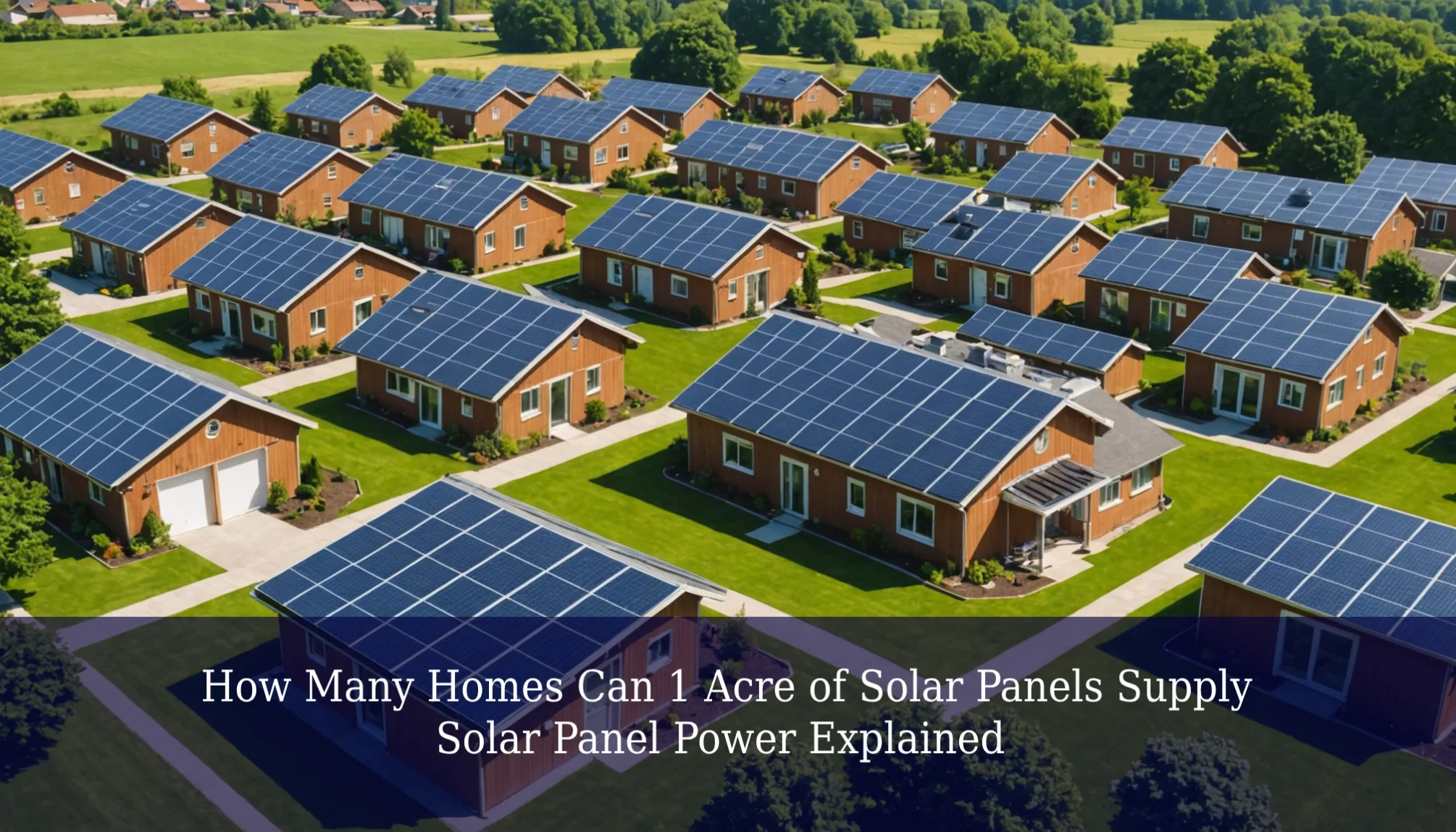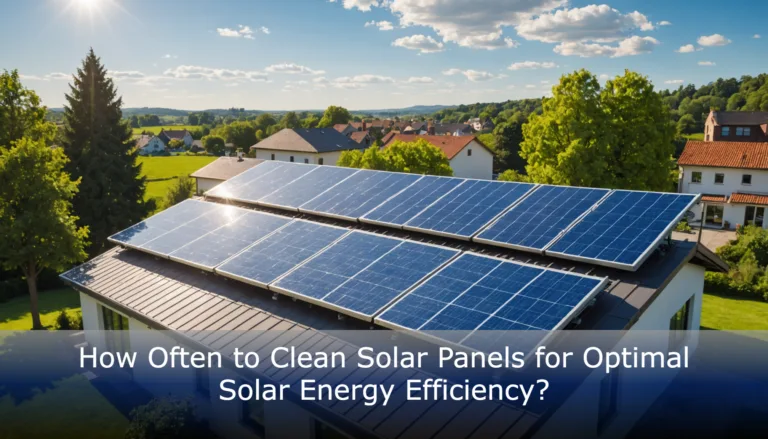How Many Homes Can 1 Acre of Solar Panels Supply: Solar Panel Power Explained
Imagine transforming a whole acre of land into a powerhouse of renewable energy! Have you ever wondered how many homes can 1 acre of solar panels supply? This exciting question is not just about numbers; it’s about harnessing the sun’s energy to help our planet and lower electricity costs for families like yours. Understanding this topic matters because it shows how solar panels can provide sustainable energy, reducing our reliance on fossil fuels and combating climate change.
If we don’t explore this fascinating world of solar energy, we might miss out on an incredible solution to our energy needs. In this article, we’ll break down the factors that affect solar power generation, calculate how much energy 1 acre can produce, and discover real-world examples of solar installations. Get ready to dive into the sunny side of energy and find out how these amazing panels can brighten our future!
Understanding How Many Homes Can Be Powered by 1 Acre of Solar Panels
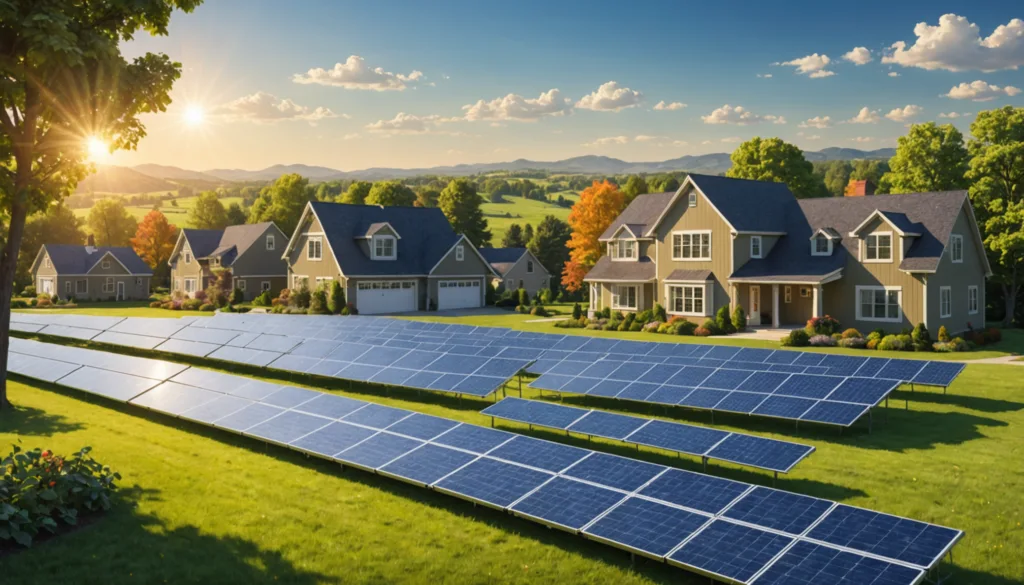
Factors Affecting Solar Power Generation from an Acre of Land
The amount of electricity generated from solar panels on an acre of land can vary based on several factors.
Solar Panel Efficiency: The efficiency of the solar panels used affects how much sunlight is converted into electricity, with more advanced technologies yielding better performance.
Sunlight Availability: Geographic location, time of year, and weather conditions play a significant role, as more sunlight translates to more energy; regions with consistent sunlight, like the Southwest U.S., often see higher outputs.
Orientation and Tilt: The installation angle of the solar panels can influence the amount of sunlight captured, with optimal positioning maximizing energy production throughout the day.
References:
Average Electricity Consumption of Residential Homes
On average, a household in the U.S. consumes about 877 kWh per month, which translates to approximately 10,500 kWh annually (US Energy Information Administration). This figure can fluctuate based on household size, energy efficiency practices, and appliance usage. Regions with different climates may also affect consumption patterns; for example, homes in warmer climates might use more energy for air conditioning during the summer months, while those in colder areas may have higher heating needs in winter.
Converting Solar Panel Output to Household Energy
An acre of solar panels can produce between 350,000 to 500,000 kWh per year, depending on the factors mentioned above. This means that 1 acre of solar panels could potentially power around 30 to 50 homes annually, assuming average household energy consumption. Additionally, advancements in solar technology may allow for improved energy conversion rates, further increasing the number of homes powered by a single acre over time.
Calculating Energy Production from an Acre of Solar Panels
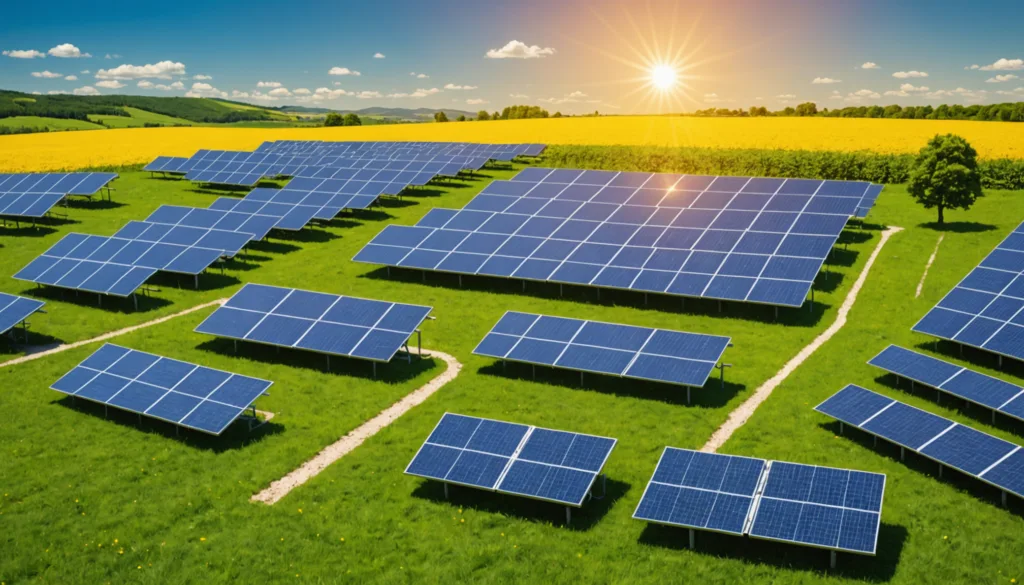
Solar Panel Efficiency and Energy Output Variables
The efficiency of solar panels typically ranges from 15% to 22%, with higher efficiency panels producing more energy per square foot (Cotswold Energy Group). This increased output can significantly boost the overall energy production from an acre, especially as new technologies emerge. By choosing high-efficiency panels and ensuring proper installation, solar farms can maximize their potential energy generation and contribute more effectively to local power needs.
How Many Solar Panels Fit on One Acre
An acre is about 43,560 square feet. Depending on the size of the solar panels (usually around 15-20 square feet each), a typical acre can accommodate approximately 2,000 to 3,000 solar panels. The exact number can vary based on panel design and spacing requirements, which are crucial for minimizing shading and maximizing exposure to sunlight throughout the day.
Example Calculation
- Acre Size: 1 acre = 43,560 square feet.
- Average Solar Panel Size: Let’s take an average panel size of 17.5 square feet (the midpoint of 15-20 square feet).
- Calculation: Number of Panels=Total Area of AcreArea of One Solar Panel=43,560 sq ft17.5 sq ft≈2,489 panels
Variations Based on Spacing
- If we assume spacing requirements that reduce the number of panels to account for necessary gaps between them, we can have:
- Tighter Spacing: Approximately 3,000 panels (minimized gaps).
- Looser Spacing: Approximately 2,000 panels (more gaps for optimal sunlight exposure).
In a typical acre, depending on the design and spacing of solar panels, you can fit approximately 2,000 to 3,000 solar panels.
Determining the Installed Capacity of Solar Panels per Acre
The installed capacity can vary, but with modern solar technology, the capacity for an acre can range from 1 MW to 1.5 MW. This capacity correlates directly with how many homes can be powered, as higher capacity installations translate to greater energy outputs. Additionally, ongoing improvements in photovoltaic technology may continue to increase this capacity in the future, enabling more homes to benefit from solar energy.
Regional Variations in Solar Panel Performance
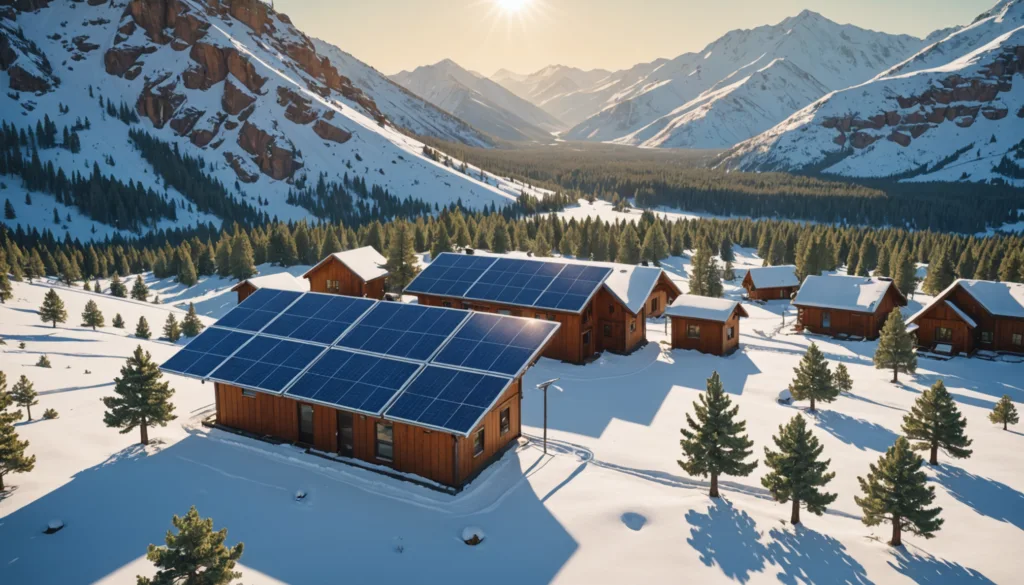
How Geography Affects Power Generation from Solar Panel Systems
Regions with higher solar irradiance (like the Southwest U.S.) will generally produce more energy than areas with less sunlight (like the Northeast). Geographic factors such as latitude and local climate conditions play a pivotal role in determining solar potential. For instance, areas with frequent cloud cover may experience reduced energy output, highlighting the importance of site selection for solar installations. (Science Direct)
Seasonal Changes in Solar Energy Output
Solar energy production can fluctuate by season, with summer months producing significantly more energy than winter months due to longer daylight hours. This seasonal variability necessitates careful planning for energy storage solutions or grid management to ensure a reliable power supply throughout the year. Furthermore, understanding these seasonal trends can help homeowners and businesses optimize their energy consumption and usage patterns.
Calculating Energy Production in Different Climate Zones
Different climate zones impact energy output, with arid regions typically performing better than those with frequent cloud cover. For example, desert climates often provide consistent sunlight and minimal atmospheric interference, leading to higher solar yields. Evaluating local climate data is essential for accurately assessing the potential energy output of solar installations and making informed decisions about their deployment.
Real-World Examples of Acre-Scale Solar Power
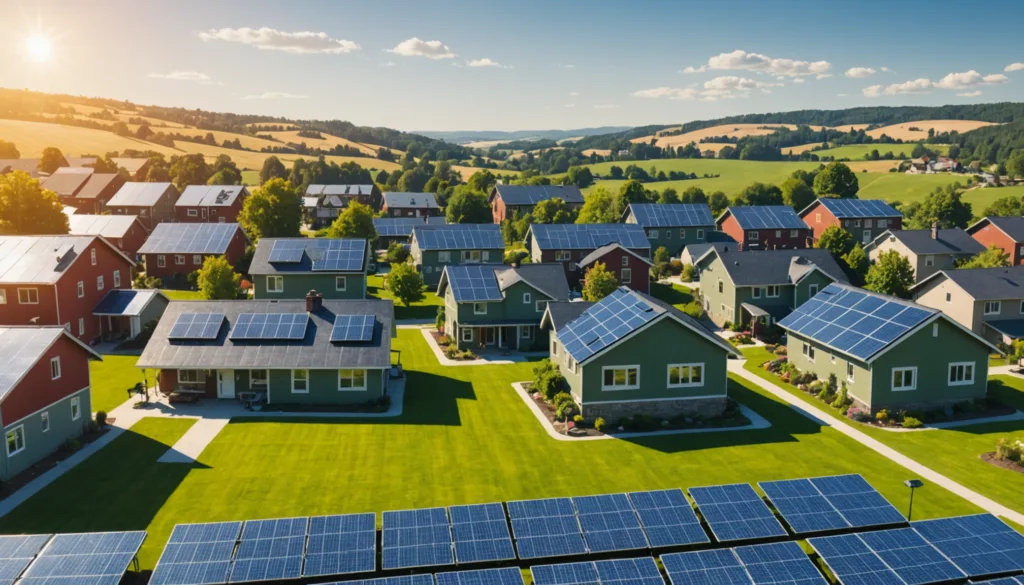
Comparing Theoretical vs. Actual Electricity Generation
While calculations provide estimates, actual output may vary due to installation quality and maintenance. Real-world examples show that many solar farms meet or exceed theoretical projections when factors such as weather patterns and panel orientation are optimized. Analyzing performance data from existing installations can provide valuable insights for future projects and help refine expectations for energy generation.
How Many Homes Are Currently Powered by Acre-Sized Installations
Some existing solar farms, like those in California, successfully supply energy for hundreds of homes per acre, showcasing the potential of solar power. These installations serve as practical examples of how renewable energy technologies can meet local demand and contribute to sustainability goals. By studying these successful projects, developers can better understand best practices and strategies for maximizing energy output.
Maximizing the Number of Homes Supplied by Solar Panel Acres
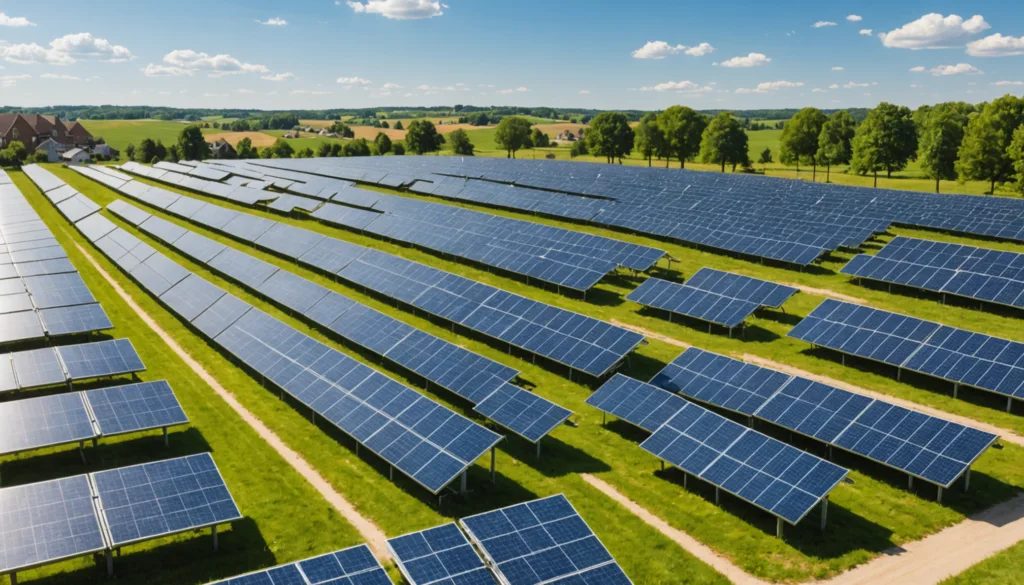
Advanced Technologies to Improve Capacity of Solar Panels
Technological advancements like bifacial panels and solar tracking systems can enhance energy output significantly. Bifacial panels utilize sunlight from both sides, effectively increasing their efficiency compared to traditional panels. Furthermore, tracking systems adjust the panel angle throughout the day to follow the sun’s path, optimizing sunlight exposure and maximizing energy production.
Optimizing Layout and Spacing for Maximum Power Generation
Proper spacing and layout can minimize shading and maximize sun exposure, leading to increased energy production. Strategic planning can ensure that each panel receives adequate sunlight while also considering maintenance access routes. Implementing innovative designs that account for local topography can further enhance overall system efficiency.
Balancing Residential Consumption with Solar Energy Production
Understanding local energy consumption patterns can help in designing solar installations that effectively meet community needs. By employing smart grid technologies and energy storage solutions, it is possible to align solar production with demand more closely. This balance not only enhances reliability but also reduces dependence on fossil fuels during peak usage periods.
Conclusion
In summary, 1 acre of solar panels can power approximately 30 to 50 homes, depending on various factors such as sunlight exposure, panel efficiency, and local electricity consumption. As technology advances and new innovations emerge, these numbers may improve significantly, making solar energy a more viable and sustainable choice for residential power needs. Continued investment in research and development will be crucial for optimizing solar technologies and expanding their applications across diverse environments.
FAQs
1. What factors influence how many homes can be powered by 1 acre of solar panels?
Several factors affect the energy production of solar panels on an acre, including the efficiency of the solar panels, the geographic location and sunlight availability, and the orientation and tilt of the panels. Additionally, local energy consumption patterns and seasonal variations in sunlight can also impact the overall output.
2. How much electricity can 1 acre of solar panels typically produce annually?
On average, 1 acre of solar panels can produce between 350,000 to 500,000 kilowatt-hours (kWh) of electricity each year. This output can vary based on several factors such as panel efficiency, geographic location, and weather conditions. As technology advances, these figures may improve, allowing for greater energy production per acre.
3. How does the average household energy consumption affect the number of homes powered by solar panels?
The average American household consumes about 10,500 kWh annually. Given this consumption rate, the energy produced from 1 acre of solar panels can potentially power around 30 to 50 homes per year. However, this number can vary based on regional consumption patterns and the efficiency of the solar technology used.

